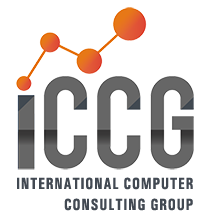Just as companies must transform to meet today’s challenges, the software vendors they rely on must also mutate their products to become a better fit for the next generation of organizations. And that’s happening with ERP. From my perspective, here are the seven ways ERP is evolving, along with my tips for selecting an ERP vendor.
Future-Thinking ERP Trends: How The Industry Is Evolving
Topics: Manufacturing, Food & Beverage, Small Business, Big Data, Food Technology, CloudSuite Food & Beverage, Cloudsuite Fashion & Apparel, Infor CloudSuite Fashion PLM, Security & Compliance, data security
The role of the CFO has changed dramatically over recent times and will continue to do so. The modern CFO is now emerging as a key enabler in creating a more ‘dynamic’ finance function that can react to ever changing demands from both internal stakeholders and external customer, suppliers and partners. In addition to the traditional responsibility of ‘managing the finances’ of the organisation, the CFO is now increasingly engaged with activities such as strategy formulation and business transformation projects.
Topics: Manufacturing, Food & Beverage, Small Business, Big Data, Food Technology, CloudSuite Food & Beverage, Cloudsuite Fashion & Apparel, Infor CloudSuite Fashion PLM, Security & Compliance, data security
Business transformation projects are increasingly being undertaken to facilitate growth, reduce costs and increase competitiveness in a harsh global marketplace where only the organisations who continually evolve and innovate prosper. The finance function is not immune to this transformation process and can play a key role in its development and adoption.
Topics: Manufacturing, Food & Beverage, Small Business, Big Data, Food Technology, CloudSuite Food & Beverage, Cloudsuite Fashion & Apparel, Infor CloudSuite Fashion PLM, Security & Compliance, data security
Chief Financial Officers need to play a leading role to ensure data security within an organisation. Potential threats are proliferating and the financial impact of a breach of data security can be substantial. Consider how your turnover and profitability would be impacted due to a data security breach which could potentially hold your organisation to ransom or prevent users from performing their day to day activities.
Topics: Manufacturing, Food & Beverage, Small Business, Big Data, Food Technology, CloudSuite Food & Beverage, Cloudsuite Fashion & Apparel, Infor CloudSuite Fashion PLM, Security & Compliance, data security
Supply Chain Challenges In The Footwear Market
At a recent Footwear Workshop organized by the American Apparel & Footwear Association (AAFA), industry leaders and experts discussed key themes and supply chain challenges in the footwear market. At this event, industry leaders highlighted the need for brands to address multiple challenges like supply chain visibility, traceability, compliance, and sustainability. Here are some other key themes:
Topics: Manufacturing, Food & Beverage, Small Business, Food Technology, CloudSuite Food & Beverage, Cloudsuite Fashion & Apparel, Infor CloudSuite Fashion PLM
Overcoming Supply Chain Complexity In Food And Beverage
The food and beverage industry is undergoing fundamental changes in how consumers buy and what they want to know about the products. At the same time, the industry faces an increased focus on healthy eating by consumers, companies, and governments. Adding to this is a rapidly changing competitive environment with a proliferation of new channels, producers, and products that compete with established brands and outlets.
If these challenges weren’t already enough, today’s companies are also facing unprecedented changes that stress innovation, business model evolution, and supply chain agility. Having the right products with the right content and characteristics, and the right information clearly displayed is necessary. But even all that isn’t enough to guarantee success. The products must also be positioned in the right places at the right time for customers to be able to buy—and that’s the job of the supply chain.
To keep up with all of this, an effective food and beverage supply chain must be fully in sync with the consumer through technology-enabled sensing to satisfy multiple channels with seamless visibility and fulfillment.
Topics: ERP, Food & Beverage, Supply Chain, Food Technology, CloudSuite Food & Beverage, Infor M3 ERP, Enterprise Software, WMS, Supply Chain Management
From Farm To Fashion: What Fashion Brands Can Learn From The Food Industry
Behind all the glitz and glamour fashion brands still have a business to run. It’s clear that in 2023 the back-office and supply chain is in the spotlight when it comes to delivering new and improved customer experiences and meeting expectations around sustainability and product provenance.
Topics: Manufacturing, Food & Beverage, Small Business, Food Technology, CloudSuite Food & Beverage, Cloudsuite Fashion & Apparel, Infor CloudSuite Fashion PLM
From Vision To Reality: Harnessing Cloud ERPs For Smart Factory Success
Smart factories represent the next frontier in operational performance, combining human ingenuity, advanced technologies, and data-driven insights. At the heart of this transformation lies data and its analysis. Data is the lifeblood of a smart factory, and its exponential growth necessitates a viable conduit to ensure seamless flow.
Topics: Manufacturing, Food & Beverage, Small Business, Smart Factories, Food Technology, CloudSuite Food & Beverage, Cloudsuite Fashion & Apparel, Infor CloudSuite Fashion PLM
What Can Food And Beverage Manufacturers Can Expect From APM
It’s a moment of enormous opportunity, with Industry 4.0 transforming the way businesses collect, process, and deploy data, and Maintenance 4.0 applying those tools and techniques to revolutionize asset management.
A strategic approach to Asset Performance Management (APM) helps you keep critical equipment and production lines up and running, using the mountains of operational data now available to help you track equipment performance, anticipate the need for maintenance, and prevent breakdowns before they occur. But even in steady economic times, and certainly in the midst of a global pandemic, the decision to embrace the new technology will always be guided by the bottom line: Will the cost of the new system be justified by the efficiencies and cost savings it delivers?
Infor’s Best Practice Guide, “Why your EAM strategy must evolve to increase food safety,” focuses on five specific, tangible benefits of APM, to help you make an informed decision on an approach that will soon be the price of entry for successful business operations in the 21st century.
Topics: ERP, Food & Beverage, Distribution, Supply Chain, Supply Chain Visibility, Supply Chain Network, Food Technology, Cloud BI, CloudSuite Food & Beverage, Enterprise Asset Management, Enterprise Software, Infor CloudSuite M3, Infor CloudSuite ERP
Driving Business Transformation With Infor CloudSuites.
There has never been a better opportunity for you to embrace technology that drives innovation. Transforming and evolving as an organization is now a requirement to thrive and protect continuity of business. Infor helps Lawson S3 customers drive digital transformation and ensure business continuity with Infor industry CloudSuites. Infor CloudSuite customers leverage improved automation and role-based security to tighten access to sensitive data, scale quickly and efficiently, and harness the power and responsiveness of Infor’s modern system architecture to stay ahead and compete.
Infor CloudSuites are built on Amazon Web Services (AWS), the market leader for cloud-based infrastructure as a service and platform as a service for over 10 years. This best-in-class system architecture is purpose-built for innovation, providing you with industry-leading scalability and availability, integrated governance and control, and unparalleled extensibility to democratize data for end users.
Infor CloudSuites, including CloudSuite Healthcare, CloudSuite Corporate, and CloudSuite Public Sector, provide an easy path for Lawson S3 financials and global human resources customers to digitally evolve business operations. CloudSuites deliver industry-specific capabilities without extensive customizations or integrations. Infor’s enterprise resource planning (ERP) competitors struggle to tap into the latest advances in enterprise functionality with as little business disruption and as cost effectively as with our AWS tag team.
Topics: ERP, Food & Beverage, Distribution, Supply Chain, Supply Chain Network, Food Technology, CloudSuite Food & Beverage, Enterprise Asset Management, Enterprise Software











